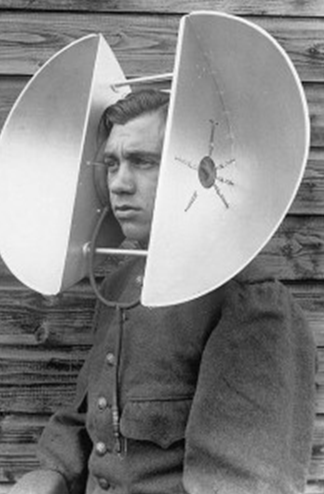Does your LinkedIn profile speak to your ideal clients or is it all about you?
Do you come up in the search results when potential prospects are looking for what you offer?
And does your profile speak to your ideal clients when they land on it?
Simply having a LinkedIn profile is no longer enough. With over 400,000,000 LinkedIn members, there is a very good chance your prospective clients will never find you. That is unless you take some very proactive steps to ensure that you are:
Easily found when they search for someone who does what you do and
Have a compelling profile that makes them want to learn more about you
If you can manage these two things and create a professional and search-optimized LinkedIn profile, you will be well on your way to turning your profile into a lead generation magnet.
In fact, doing this is so vital that I recommend that you don’t start actively using LinkedIn as a lead generation or business building tool until you have done this.
I am going to share with you the three most important areas of your LinkedIn profile and what you need to do to ensure they are client focused and search optimized. I even include a video tutorial below to show you exactly how to do this.
3 Most Important Areas of Your LinkedIn Profile
1. LinkedIn Profile Headline
Your headline is the MOST important part of your LinkedIn profile.
Combined with your profile image, your headline is the first impression you give when someone finds you in the search results or lands on your profile page.
You have 120 characters to provide them with the information they need to decide that:
They are interested in clicking on your profile to learn more
You can help them solve one of their key challenges
You share the same market and provide a service or product that is complementary to their own
There is some other reason which they would benefit from connecting with you
Often potential prospects or partners will find you in the search. Ensuring your profile is search ready, means that you need to focus on two key elements.
The first element you need to think about when creating your profile is to make it search optimized. To do this, add at least one or two of your main keywords to your headline. While it does not guarantee you will be always be found, keywords in your headline do carry some weight with LinkedIn’s algorithm and they also provide a quick way for people scanning for those keywords to pick you out.
It is not enough to simply show up in the search results as many other profiles will be listed. Being found and identified with your keywords will also not be enough to get someone to “click” on your profile.
You must also stand out and capture the attention of your ideal clients. This would include having a compelling statement to capture your readers’ attention and intrigue them enough to want to click on your profile.
2. Client Focused Summary Section
After you have convinced them to “click” and they have landed on your profile, your summary section becomes tremendously important. This is because it’s often the first thing a person reads to learn more about you and what you offer.
You will want to keep these key concepts in mind while writing your client-focused summary:
Your LinkedIn profile should not be a job resume that’s written with you as the focus. The person reading your profile doesn’t care about your employment history (unless you are a jobseeker). The truth is that nobody cares about you — they care about what you can do for them. So make sure your summary is client-focused.
Write your summary section in the first person. Even though it is business-oriented platform, LinkedIn is still a social network, so don’t forget to be social! One way to do this is to write in the first person, not in the third person.
Speak directly to your target market. When they land on your profile, you want your potential clients to know they’re in the right place and that you are the person who can help them with their specific problems. You will also want to include your chosen keywords in your summary section.
Your summary can be up to 2,000 characters, and I suggest you use them all.
Here is my three-part formula that I use to write a compelling and client-focused summary section.
Credibility Section
Ideal Clients—Their Problem—Your Solution
Call to Action
Start with your credibility section. This should contain one or two short paragraphs which will tell prospective clients a little bit about: who you are, your story, why you do what you do, and your background. Be sure to mention anything to enhance your credibility such as media attention, publications, well-known clients, years of experience, or anything else that makes you stand out. This establishes your credibility for what you do.
Next, identify your ideal clients. This will allow prospective clients to recognize themselves and to know they are in the right place. You identify the types of clients you work with and then speak directly to them about their problems and your solutions to those problems.
Essentially, you want to ensure that once your ideal clients land on your profile, they will self-select after realizing that you are someone they need to connect with.
So for example, if any Vice Presidents for Sales land on my profile, they will see right away that I am speaking to them—I’ve identified them, the problem their sales teams have, and my solution of using social selling training to increase their leads and sales conversions.
Finally, you should have a clear call to action—tell prospective clients exactly what you want them to do next. Do you want them to pick up the phone and call you? Do you want them to email you? Tell them exactly what they should do next.
If you miss this part, as most people do, then you leave it to chance that they will actually follow up. People often have the best of intentions and plan to follow up but then forget. So tell them exactly what to do and help them take that action now.
3. Current Work Experience
Your Current Work Experience describes what you’re doing right now in your business or your current position.
This is another opportunity to include your keywords in your title and your description. Just like the Summary section, you have 2000 characters to describe your current work experience, so make sure you make full use of them.
The formula you use for your current work experience is similar to how you have laid out your summary, but with some minor differences.
First, begin with a paragraph or two that highlights your company and anything that positions your credibility in your industry. Share the most compelling information about your company here. You can also provide information that highlights the benefits clients receive in working with you.
Next you can list all of the services you provide. This is another good spot for keyword optimization.
There are a couple of optional things you might consider adding to your current work experience. The first one is a list of current and past clients. If you have well-known clients or brands you’ve worked with that your ideal client would recognize, include their names. If they’re not well-known brands, you can simply list the types of clients you work with. For example, you might say, “I work with accounting and law firms.”
Another possibility is to add one powerful client testimonial. If you have a great client testimonial on your website that isn’t shown as a recommendation on your LinkedIn profile, you can include it here.
Lastly, in your current work experience description, include a call to action. You can use the same call to action that you created in the summary section and add it to the bottom of your description section.
While these three sections are so important to ensure a great LinkedIn profile, it is also important to ensure that you complete your entire profile including your vanity URL, recommendations, skills, contact information, past experience, publications and other relevant areas.
These areas further help any potential prospects to be able to decide that you are someone they might want to work with. They are also important for search purposes and to ensure you look professional.
What other LinkedIn or social media techniques do you want to learn more about? Let me know in the comments so I can ensure we create more great content to help you and your business.
Melonie Dodaro is the author of the #1 international bestseller The LinkedIn Code. She is also the founder of Top Dog Social Media, a digital marketing agency that helps businesses, sales teams and professionals leverage social media and online marketing to build engaged communities and increase leads, prospects and clients.
Dubbed by the media as Canada’s #1 LinkedIn expert she is highly sought after internationally as a LinkedIn and social selling speaker and trainer. To learn more about Melonie visit HERE and HERE.

![Turn Your LinkedIn Profile into a Client Magnet [Video Tutorial]](https://www.jstechdesigns.com/wp-content/uploads/2016/05/252Client-Focused-LinkedIn-Profile_700x400-61qIfn.png)



